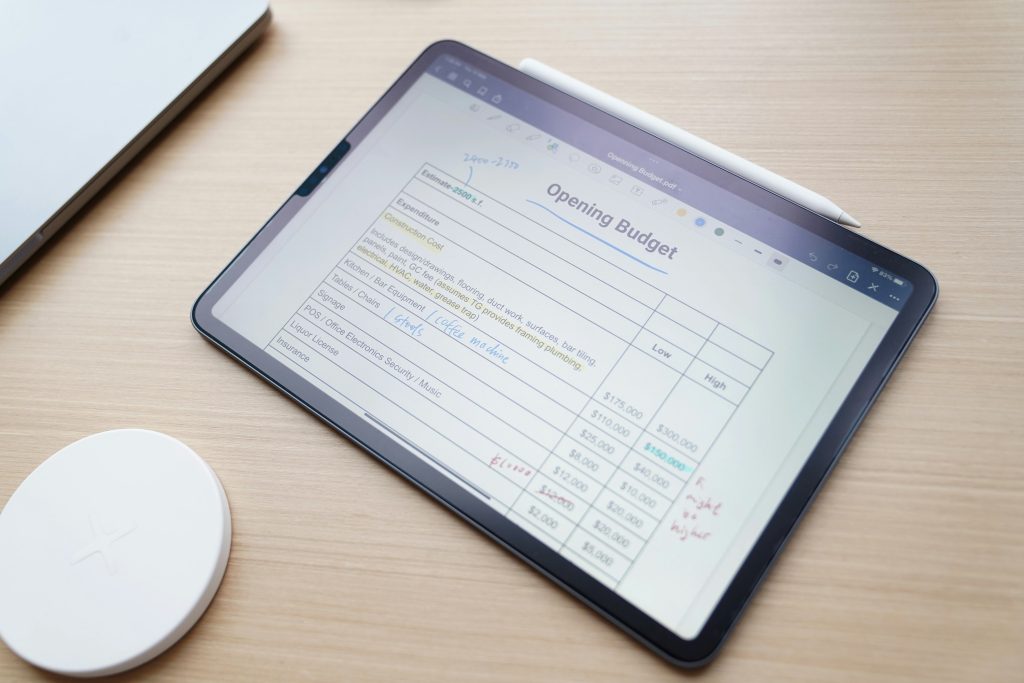
Introduction
If you’re a real estate investor, developer, or property manager, you know audits aren’t just a year-end event—financial statement requests can come at any time. Lenders may want to see year-to-date financials before approving a loan, investors might require them before committing capital, and tax authorities can request them to confirm compliance.
Unfortunately, many real estate businesses treat audit or tax return prep as a last-minute scramble, pulling together documents and trying to reconcile accounts under time pressure. This approach is stressful, risky, and can damage credibility if discrepancies appear.
The better way? Treat your books as if they could be audited at any moment. By embedding audit readiness into your day-to-day bookkeeping process, you can ensure clean, accurate, and well-documented financials year-round. That means fewer headaches, faster funding approvals, and stronger trust with stakeholders.
1. Maintain a Standardized Chart of Accounts
A Chart of Accounts (COA) is the backbone of accurate bookkeeping. In real estate, it’s critical that your COA not only aligns with accounting standards but also provides property-level and portfolio-level visibility.
- Consistency across entities – If you own multiple properties under different LLCs, each entity should use the same COA structure. This allows you to consolidate reports quickly and compare performance across properties.
- Clear separation of operating vs. capital costs – For example, “Repairs & Maintenance” should be separate from “Capital Improvements” so you can comply with IRS capitalization rules and lender reporting requirements.
- Use descriptive account names – Instead of “Miscellaneous Income,” use “Late Rent Fees” or “Laundry Machine Income” to make reporting clear.
Example:
A property manager with 12 apartment buildings uses the same COA for each property, allowing them to generate a consolidated portfolio P&L in minutes—something that would take hours if each property’s accounts were structured differently.
Audit Benefit: Auditors can follow transactions more easily when accounts are consistent, reducing the time they spend asking for explanations.
2. Reconcile Accounts Monthly
Reconciliations are like a monthly “health check” for your books. They ensure that your accounting software matches reality.
- Bank and credit card reconciliations – Match your general ledger against statements to catch missing or duplicate transactions.
- Loan reconciliations – Verify principal and interest amounts against amortization schedules and lender statements.
- Property management software syncs – If you use Yardi, AppFolio, or Buildium, compare those reports to your accounting ledger to make sure rent, deposits, and fees are properly recorded.
Example:
If a rent payment gets deposited into the wrong property account, a monthly reconciliation will catch it before financial statements are finalized.
Audit Benefit: Clean monthly reconciliations mean auditors can trace balances directly to bank or lender statements without having to dig through months of transactions.
3. Organize Supporting Documentation
Auditors want proof—every transaction they ask about needs a backup.
- Digital storage is a must – Paper files slow things down and risk getting lost. Use a secure cloud storage system, organized by year, property, and account type.
- Link documents to transactions – Many accounting systems (like QuickBooks Desktop Enterprise, QuickBooks Online, and Xero) allow you to attach invoices and receipts directly to transactions.
- Use naming conventions – For example: 2025-05-10_VendorName_ServiceDescription.pdf makes documents easy to search.
Example:
For a $75,000 roof replacement, keep the signed contract, all vendor invoices, proof of payment, and any warranty documents in one folder labeled with the property and project name. Ideally, the transaction would have been paid from the correct business checking account, to enable auditors to easily track it back to that entity’s bank statement.
Audit Benefit: When an auditor asks for backup on a transaction, you can provide it within minutes—showing professionalism and reducing delays.
4. Track Capital Improvements Separately
Misclassifying repairs as capital improvements (or vice versa) is one of the top audit issues in real estate.
- Dedicated CapEx accounts – Track major projects like HVAC replacements, building additions, or parking lot repaving separately from operating expenses.
- Maintain a CapEx log – Include start/end dates, contractor names, total cost, and a brief description of the work.
- Retain contracts and invoices – These documents support your capitalization decisions and help with tax depreciation.
Example:
Replacing 50 light fixtures with energy-efficient LED models in a common area may qualify as a capital improvement (if each unit is above the IRS de minimus capitalization threshold), while repairing a single broken fixture is typically an expense.
Audit Benefit: Clear documentation of CapEx decisions ensures compliance with tax and lender guidelines and avoids reclassification during an audit.
5. Keep Loan & Lease Schedules Updated
Loans and leases are critical real estate obligations that must be tracked accurately.
- Loan amortization schedules – Keep them updated for each property, reflecting extra payments or refinancing changes.
- Lease tracking – Maintain a spreadsheet or software record of lease terms, renewal dates, rent escalations, and security deposits.
- Tie to the balance sheet – Loan principal balances and lease liabilities should match schedules exactly.
Example:
A commercial property lease includes a 3% annual rent escalation. Updating this in your schedule ensures rent income is correctly recorded and reconciled.
Audit Benefit: Having schedules that reconcile with financial statements reduces questions and prevents last-minute adjustments.
6. Perform Monthly Internal Reviews
An internal review is like a mini-audit you do yourself.
- Compare to budget and prior year – Spot unusual spikes or drops in income and expenses.
- Review account detail – Check for transactions coded to “Miscellaneous” or “Uncategorized” and reclassify as needed.
- Clear old balances – Write off uncollectible receivables or adjust prepaid expense balances.
Example:
If your property insurance expense spikes 30% from last year, an internal review will uncover whether it’s due to increased premiums or misclassification.
Audit Benefit: Identifying issues early means fewer surprises and smoother auditor communication.
7. Implement Access & Approval Controls
Strong internal controls prevent errors and fraud.
- User permissions – Limit who can enter, edit, approve, and reconcile transactions.
- Dual approvals – Require two signoffs for payments above a certain threshold (e.g., $5,000).
- Audit trails – Ensure your accounting software logs changes so you can track edits.
Example:
A property manager approves all vendor invoices, while a separate staff member records them in the accounting system.
Audit Benefit: Auditors see robust internal controls as a sign of financial integrity, which can reduce testing requirements.
8. Communicate with Your CPA Year-Round
Your CPA is a valuable partner—don’t just call them at tax time.
- Quarterly check-ins – Share financials for a quick review and catch potential issues early.
- Consult on unusual transactions – Large capital projects, property sales, or refinancing events may have tax or accounting implications.
- Stay updated on regulations – Your CPA can alert you to new compliance requirements.
Example:
Before refinancing a multifamily property, consult your CPA to ensure the new loan structure is reflected correctly in your books and doesn’t cause reporting issues.
Audit Benefit: Continuous CPA involvement reduces the risk of year-end adjustments and helps ensure compliance with changing standards.
9. Prepare a Year-End Audit Binder in Real Time
Even if your audit is months away, prepare your audit binder (digital or physical) throughout the year.
Include:
- Final trial balances for each month
- Bank and loan statements
- Reconciliation reports
- Lease agreements
- CapEx logs
- Organizational documents
Example:
Instead of scrambling to collect 12 months of reconciliations in January, save them each month in an “Audit 2025” folder so they’re ready on day one.
Audit Benefit: Your auditor receives a complete, organized package—speeding up fieldwork and reducing follow-up requests.
Conclusion
Keeping your books audit-ready is about discipline, organization, and consistency. For real estate businesses, it’s not just a best practice, it’s a competitive advantage. Clean, well-documented books mean faster financing approvals, smoother investor relations, and fewer compliance headaches.
By standardizing your chart of accounts, reconciling monthly, organizing documentation, and reviewing regularly, you’ll always be ready—whether the request comes from a CPA, lender, investor, or regulator.
✅ Want stress-free audits year-round?
Revati Accounting specializes in real estate bookkeeping, monthly closings, and capital expenditure tracking so your books are always investor- and audit-ready.
